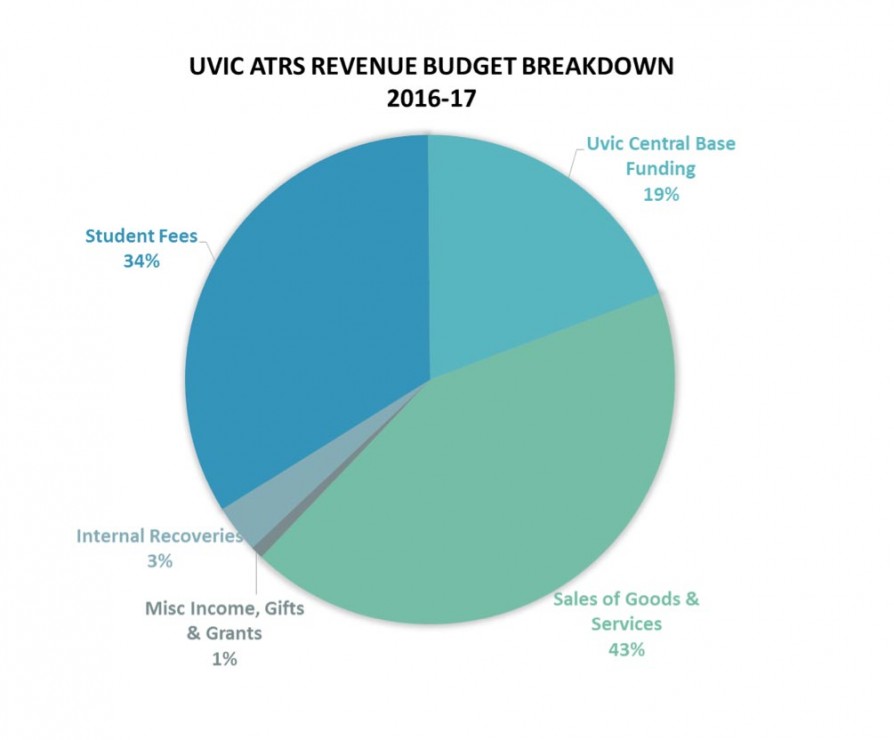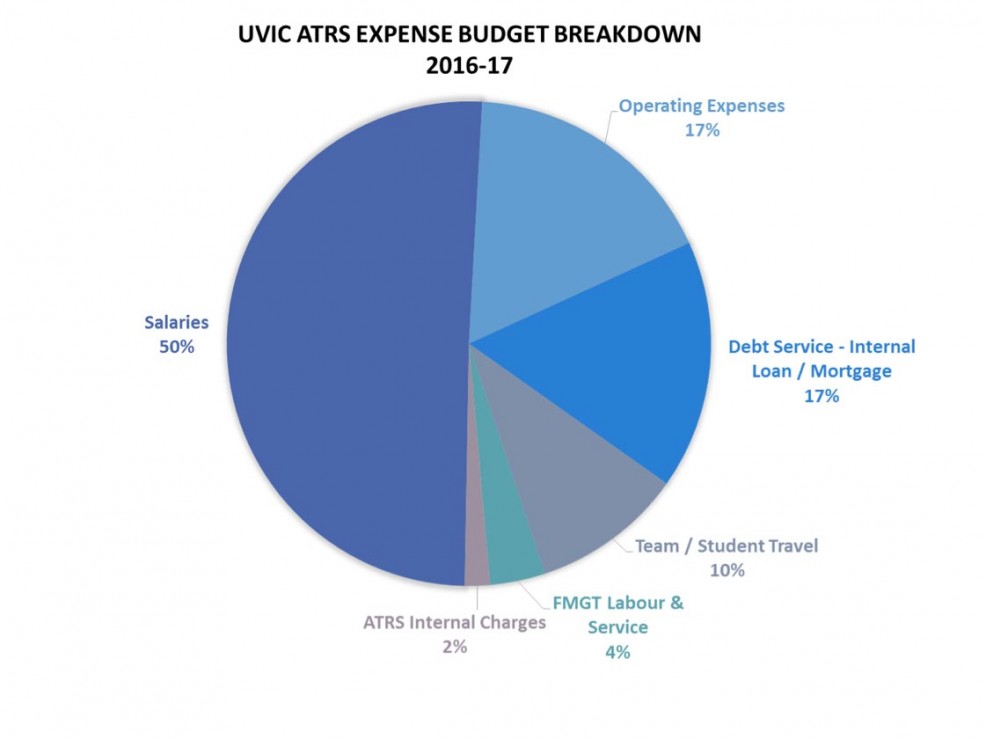At UVic, every semester entails a slew of fees and payments. Tuition, textbooks, rent, beer, and food can collectively create a swirling, savings-consuming vortex. But among the ever-rising costs of being a post-sec- ondary student is a fee with an extra layer of opacity.
The mandatory athletics fee ($83.75 per semester for full-time students, $41.88 for part-time) pops up every year, and yet its usage is unclear. UVic has a vibrant Athletics and Recreation Services (ATRS) program, but fitness passes, weekly programs, and intramural teams all cost extra. So where exactly is that money going? The Martlet delved into the depths of UVic’s financial system to find out.
The first step in determining athletics fees’ influence is to break down their impact on the Athletic and Recreation department’s overall revenue.
“[The Athletics Fee] accounts for about thirty per cent of the revenue for us to operate our athletic and rec programming,” said Clint Hamilton, UVic’s Director of Athletics and Recreation. “At the end of the day, [the Athletics fees add up to] about 2.9 million dollars.”
According to ATRS data, the exact percentage of revenue funded directly by athletics fees is 34 per cent; only the sales of goods and services (43 per cent) accounts for more. But once the athletic fee is collected, the exact allocation of that revenue is less set in stone.
“We’re not bound by policy in terms of how it’s allocated,” said Hamilton. “We have a very robust recreation program, we’ve got a very robust varsity program.
“So staffing considerations from our recreation programmers . . . through to our varsity coaches and the funds to operate facilities, to operate the programs, to provide the opportunities, that’s our responsibility for the university. And at the end of the day that’s where the funding is allocated.”
According to ATRS data, 50 per cent of total expenses are concentrated in salaries. This includes various administrative and marketing positions, varsity coaches and managers, recreation positions, sports therapists, and various lower level and part-time positions available to students, such as Thunder the Mascot.
So the short answer to the question of fee allocation is that a large portion of a student’s $83.75 is likely swallowed up to pay employees, with a smaller percentage helping to cover internal charges, operating expenses, travel
expenses, and facilities management. The only thing not necessarily covered by student fees is ATRS’s debt service. Despite not being bound by policy on allocation, the department has a more specific method for paying off the loan that financed the year-old Centre for Athletics, Recreation and Special Abilities (CARSA).
“CARSA was paid essentially from a base commitment from the university,” said Hamilton. Out of the $77 million total cost, $22 million was paid by the Athletics and Recreation department, courtesy of a loan from UVic.
“Incremental revenues from the memberships from CARSA, those optional fees, go towards the debt financing annually,” said Hamilton. “And that ($22 million loan) will be amortized — we’re just past year one—over 25 years.”
So if you’re one of the 7744 students who bought a CARSA pass in 2016, you’re not just paying for weights and exercise machines; you’re also helping the Athletics and Recreation department pay off their loan.
However, that wasn’t always guaranteed to be the case. Back in 2009, the university proposed an additional mandatory $55 on top of the athletic fee (then $73) that would specifically finance the construction of CARSA. Fortunately for students today, that proposed fee was deemed to be in violation of the provincial tuition limit policy, and was scrapped.
In comparison to other universities such as SFU and UBC, UVic’s basic athletics fee is mid-range. UBC has a mandatory $213.24 annual athletics fee and SFU has a $73.94 fee per semester. But in terms of the prices of services offered, UVic is the most expensive of the bunch. UBC’s base fee is high, but it heavily subsidizes their programs.
For example, their fitness centre, the “BirdCoop,” is available to use for $30 per semester. SFU is the cheapest of the bunch, with a membership to their fitness centre included in the basic athletic fee. (Of course, that’s not including the additional, terrible cost of attending SFU.)
Though the UVic athletics fee doesn’t cover as much as other universities, it does come with some perks. The McKinnon Building gym is small and dingy with equipment that looks as though it’s been there since the building was constructed, but it’s free for students, as is the McKinnon pool, various drop-in activities, and tickets for varsity sports games.










